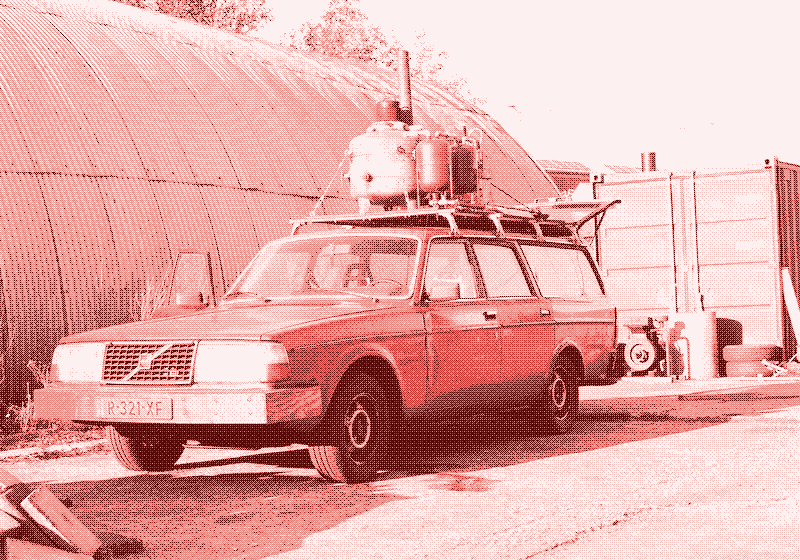
From wood gas to plastic waste
During the Second World War, many motorized vehicles in continental Europe were converted to drive on firewood. 1 That happened as a consequence of the rationing of fossil fuels. Wood gas vehicles were a not-so-elegant alternative to their petrol cousins, but their range was comparable to today’s electric vehicles. In Germany alone, around 500,000 wood gas cars, buses, and trucks were operated by the end of WWII. An even more cumbersome alternative was the gas bag vehicle. 2
Nowadays, there’s much less firewood available than in the 1940s, especially in industrialized regions. So, what would be the solution to the disruption of gasoline or electricity in the Third World War? Dutch designer Gijs Schalkx found another fuel supply, which is abundant: plastic waste. The production of plastics only started in the 1950s, after the Second World War. Since then, plastic has become an increasingly popular material, growing to a global annual production of 460 million metric tons in 2019 – twice as much as in 2000 and eight times as much as in 1976. 34
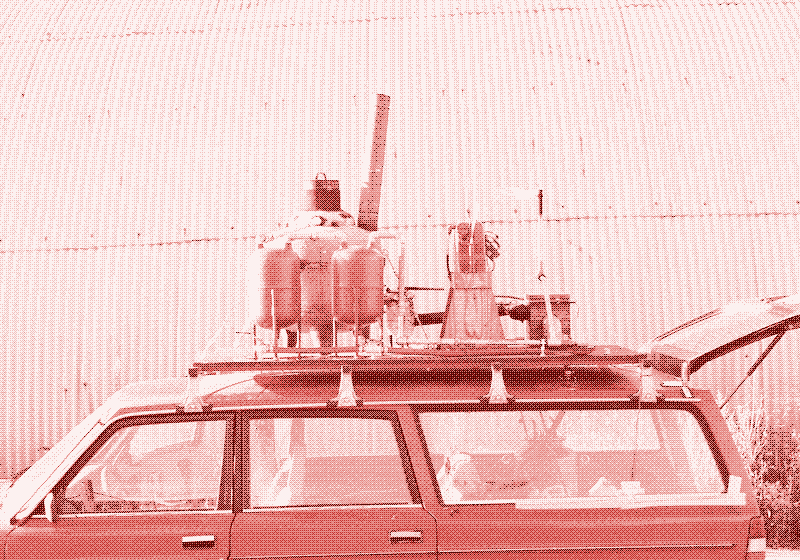
Plastics are made from fossil fuels, and the process can be turned around. Gijs Schalkx converted an abandoned Volvo 240 to run on diesel that he makes from the plastic waste he collects. The “de-refinery” converts plastic waste back into fuel and is installed on the luggage carrier of the car, making the vehicle independent of the fossil fuel infrastructure. The plastic waste is heated in a boiler to about 700 degrees Celsius, after which it evaporates. The gas is then cooled down and turns into a diesel-like liquid one hour later. Gijs collects it in plastic bottles – themselves the raw material for the diesel they contain. The fuel looks like Coca-Cola – one of the largest producers of plastic waste.
How far can we drive on plastic waste?
Making fuel can happen while the car drives, but Gijs has kept the two activities separate for safety reasons. At a speed of 80 km/u, his Volvo 240 drives a distance of 7 kilometers per kilogram of plastic (which corresponds to 14 kg of plastic per 100 km driven). That includes the fuel used to heat the plastic waste on the roof (1 kg of plastic gives 0.5 liters of diesel, so the fuel economy is 7.14 liters per 100 km). Plastic waste is a rather voluminous material, and it takes several garbage bags full of plastic waste to make one liter of fuel. Schalkx plans to use a small shredder to reduce the volume of the plastic waste he collects, but for now, he relies on a supply of discarded plastic granulate from a neighbor, consisting of PET and HDPE.
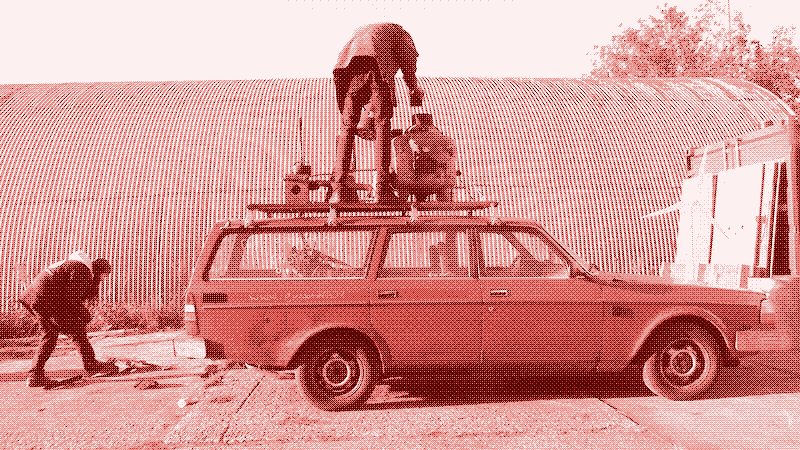
How far could we drive if we would convert all plastic waste into fuel? The Netherlands produced roughly 1,650 kilotons of plastic waste in 2017 (1,650,000,000 kg), enough to drive 11.55 billion km (11,550,000,000 km). 5 That corresponds to about 1/10th of the kilometers driven by all passenger cars in the Netherlands in 2021 (114.3 billion km). 6 On a smaller scale, the average passenger vehicle in the Netherlands drives 12,000 km per year, requiring each driver and their passengers to collect 1,714 kg of plastic. On the other hand, even the current amount of plastic waste per capita in the Netherlands (97 kg) would be enough to drive 679 km – perhaps sufficient for those who use their automobile wisely. The amount of plastic waste grows faster than the number of cars so that we can drive increasingly longer distances in the future. 7
How sustainable is driving on plastic waste?
Being able to drive a vehicle on plastic waste has benefits in terms of resilience. For example, it could allow medics to operate ambulances without a regular fuel supply in a war zone. However, how does a vehicle driven on plastic waste perform in times of peace? After all, plastic waste is a huge problem, and Gijs Schalkx’s car gets rid of it. With less than 10% of plastic waste recycled worldwide, would it make sense to encourage people to convert their vehicles to run on diesel oil made of plastic waste? Sure, it would be a more affordable alternative to electric cars, but what about the carbon emissions?
On the one hand, the embodied carbon emissions of the Volvo 240 are almost zero: Gijs found most components – including the car itself – in the dump, others on the second-hand market. 8 In contrast, manufacturing new vehicles – especially electric ones – adds a significant carbon footprint before they drive their first kilometer. They also need an extensive infrastructure to produce and distribute fuel and electricity, adding more carbon emissions. In contrast, the Volvo has its fuel infrastructure on the roof, built from scrap.
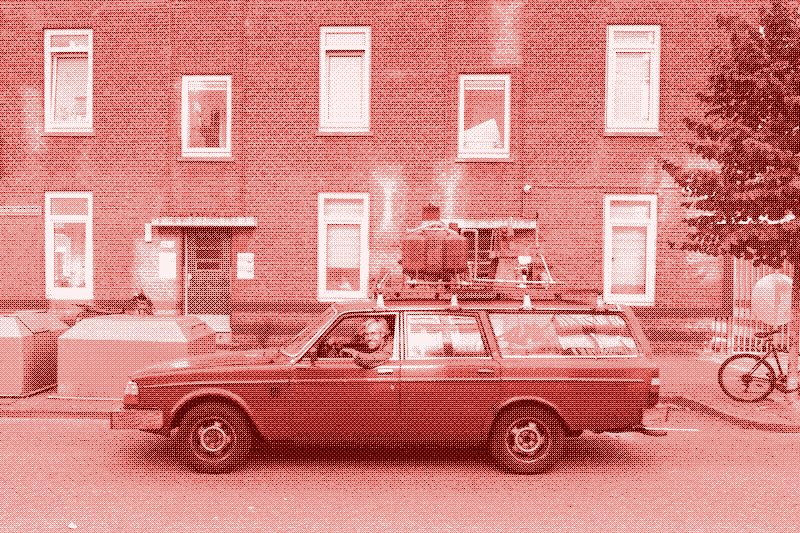
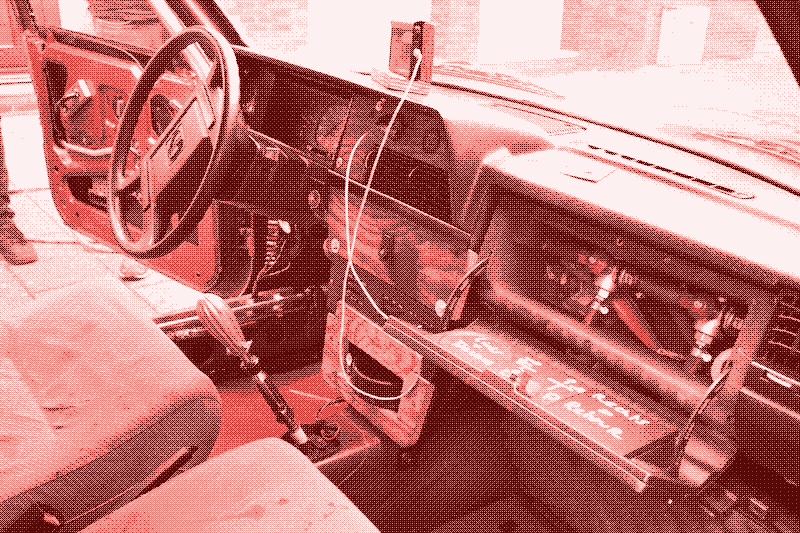
On the other hand, the CO2 emissions from fuel production and combustion are not praiseworthy. First, there is the burning of plastic on the roof. Making 1 liter of diesel requires burning 1 kg of plastic, which results in 2-2.7 kg of carbon emissions. 9 Second, there is the combustion of diesel fuel while driving, which emits 2.7 kg of carbon dioxide per liter. 10 Together, that becomes 4.7 to 5.4 kg CO2 per liter. Consequently, with a fuel economy of 7.14 liters per 100 km, the Volvo emits 33.6 to 38.6 kg of greenhouse gases per 100 km.
In contrast, the emissions of the average fossil fuel-powered car in Europe amount to 25.8 kg/100 km, including crude oil production, fuel refining, and vehicle manufacturing. 11 The emissions of a small electric car like the Nissan Leaf amount to 10.9 kg/100km in Europe, including the emissions of electricity production. 11 The Volvo thus emits 1.5 times more CO2 than the average fossil fuel-powered car in Europe and 3 to 4 times more than a small electric car. The difference will be somewhat smaller because the results for the other vehicles do not include the emissions for building the oil and power infrastructure. However, this is unlikely to tip the balance.
There are several reasons for the high carbon emissions. First, fuel production by burning plastic on the roof is four times more carbon intensive than producing fuel from crude oil in a refinery. 12 Second, the Volvo dates from 1980, when cars had lower fuel economy. Gijs Schalkx: “Hypothetically, you could convert a newer car to drive on plastic waste and have much lower carbon emissions. Likewise, the de-refinery is one of the first of its kind and could be made more efficient by real engineers. Oil refineries have been developed for more than 100 years. However, newer cars have proprietary electronic motor controls that prevent using alternative fuels.”
Externalizing pollution
Carbon emissions are not the only worry. Because of the chemicals added to plastic, burning it to make fuel creates a lot of nasty air pollution. Nobody in their right mind would propose a switch to cars fuelled by plastic waste. However, it is instructive to examine the motives behind this unanimous conclusion. Much of the plastic waste that the Volvo 240 burns burns anyway. Not in cars but in incinerators. That is the case for 44% of plastic waste in Europe. 13 That plastic waste burns to produce electricity, which can then charge electric cars. How is that more sustainable than burning plastic on the roof?
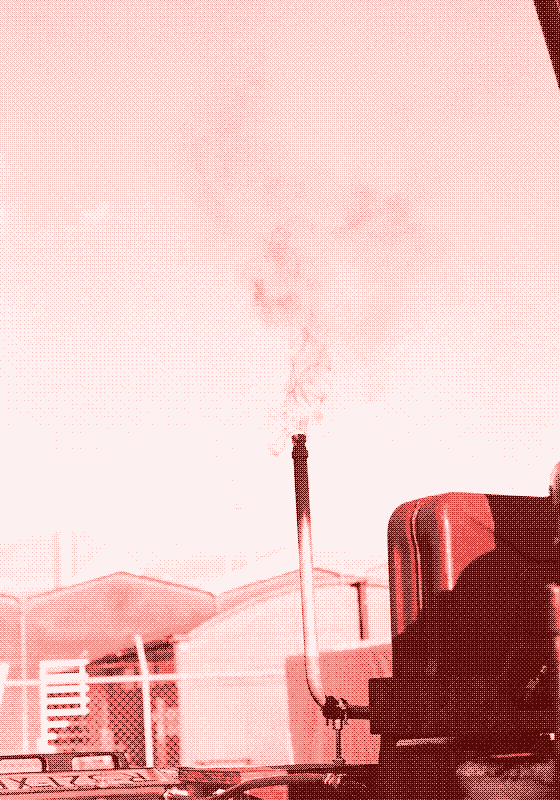
The carbon emissions are the same. So is the air pollution, although it’s easier to put a flue gas scrubber on thousands of incinerators than on millions of cars. The main difference is that burning plastic waste in incinerators to power electric cars allows many of us to externalize the side effects of car driving. An incinerator can be (and always is) located in a poor neighborhood, where it causes high incidences of cancer and other health problems despite air pollution control. Meanwhile, it produces electricity that charges electric cars that drive around low-emission zones in well-to-do neighborhoods.
Internalizing pollution
In contrast, Schalkx’s Volvo internalizes all the side effects of driving automobiles. The car is not a pleasure to drive, at least not regularly. It is dirty. Its interior stinks of plastic, which cannot be healthy – Gijs keeps the car windows open no matter the weather. Furthermore, he needs to spend a lot of time collecting plastic and making fuel, and all these disadvantages make him think twice before he gets behind the wheel. It’s unlikely that Schalkx will drive 12,000 km per year, and so, ultimately, he will produce less pollution than the drivers of more sustainable-looking cars that face none of these problems.
Somehow, the Dutch authorities, who are not known for their permissivity, officially approved the car after inspection. Schalkx drives tax-free and – thanks to his car being an oldtimer – can enter low-emission zones, where he parks alongside the latest electric SUV. Justice is not yet out of this world.
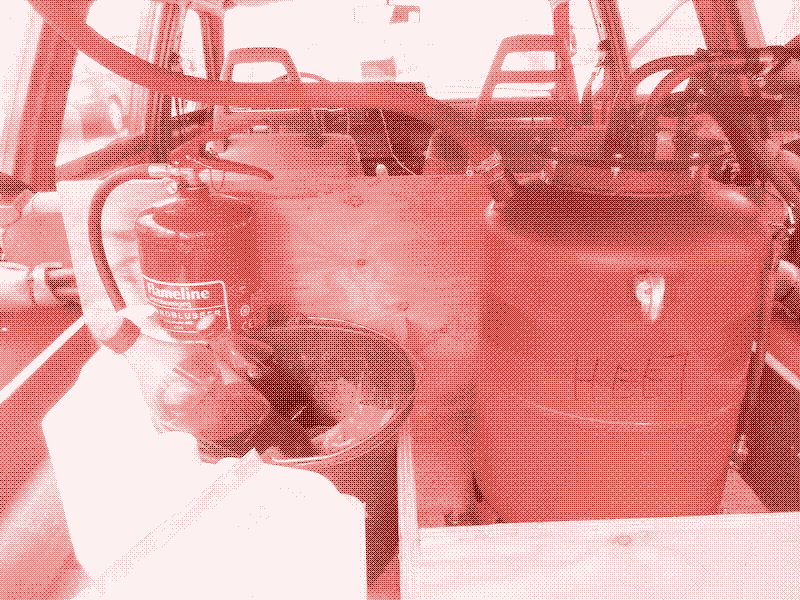
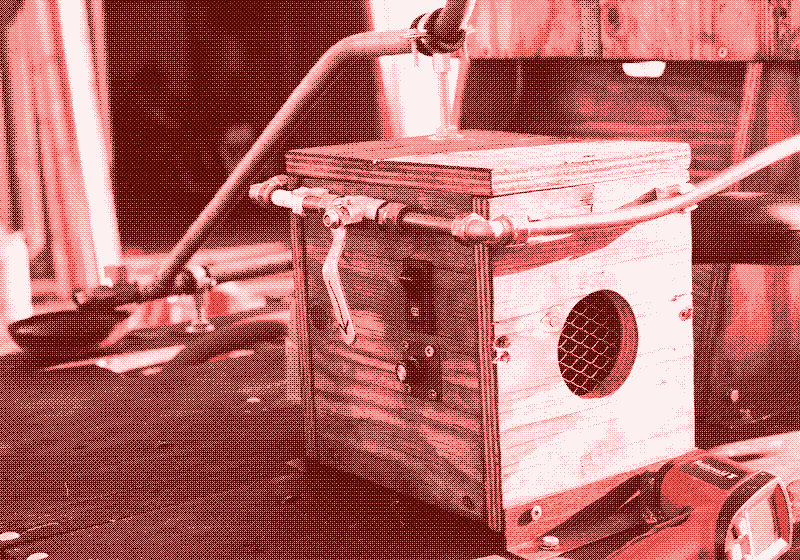
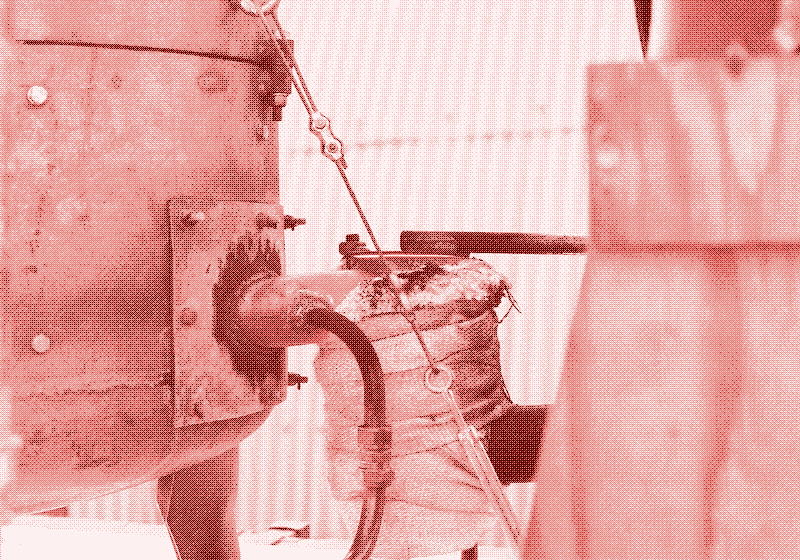
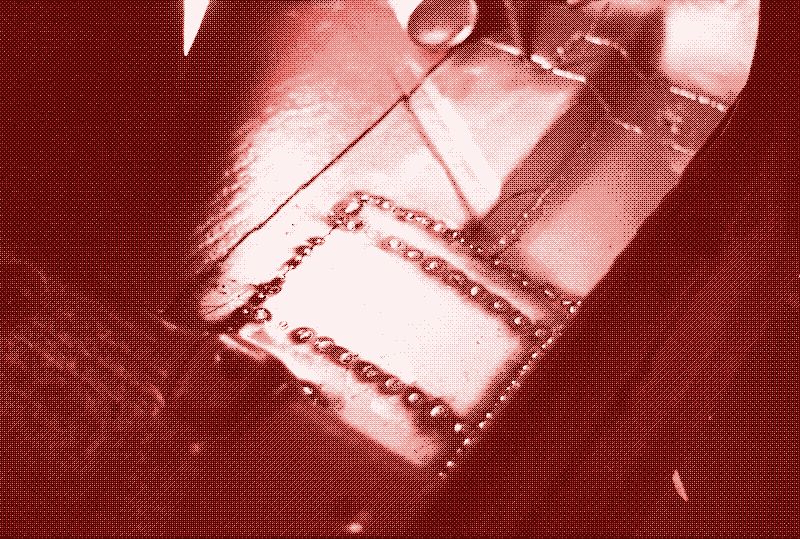
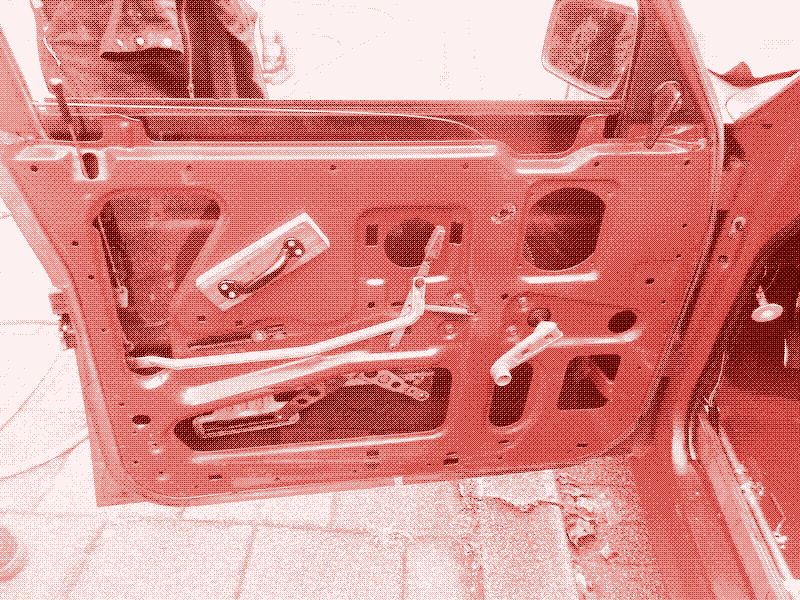
Reactions
To make a comment, please send an e-mail to solar (at) lowtechmagazine (dot) com. Your e-mail address is not used for other purposes, and will be deleted after the comment is published. If you don’t want your real name to be published, sign the e-mail with the name you want to appear.
Reactions
Josh
Great article about the Volvo powered by diesel fuel made from plastic waste! I love your site and have bought a couple of the book forms of the website you put out.
A question: if he doesn’t need to (de-)refine plastic while driving, why not decouple the (de-)refinery from the car? He could also then scale it up if the optimum process was more than what can fit in the roof rack, add emissions control technologies, etc. He could just build a little refinery that turns plastic into diesel fuel.
I’m not sure if I missed this point in the article but I came away wondering…
Thanks for your great work -
Josh
Pixel Tree
Using plastic waste as potential source of enegy is a sounds like a good idea on waste management since very little plastic waste are actually recycled. However, I’m afraid that if using plastic waste as fuel become mainstream, it would incentivize the consumers to buy more plastics and be discouraged to use reusable or biodegradable things since it would give them the “free fuel, saved money” feeling that they cannot feel from reusables or biodegradables, thus fossil fuel problem worst"
Yes, it would reduce or remove plastic waste on our landfills but that means we would be generating a much more poisonous air pollution just like the leaded gasoline of the past plus we will be warming the planet even faster not to mention that fossil fuels is a non-renewable resource and it is even more awful when used for private cars which the smoke of burnt plastics are everywhere. But for public transportations like buses or trains might be better.
Despite having fewer trees nowadays, wood gas, on the other hand, will give us incentive to plant and coppice more trees which would help capture carbon from the wood gas itself. Trees are renewables, has a better value and we can just use the wood waste from wood products then use the non-waste wood from other things. People are fearing, we might be depleting wood much faster than we can plant it, that’s why single source of energy is not good, we should also consider using other sources like biogas or biodiesel.
But I’m gonna say that plastic waste as fuel for electrical generator is a good backup energy source for people in off-grid living since these people are already living in low-impact lifestyle which their carbon footprint are still lower compared to the majority despite using these additional energy sources.
Xavier
Hello,
I’ve read this article you published on your website: https://solar.lowtechmagazine.com/2023/11/plastic-waste-in-the-fuel-tank/
There’s one section that looks odd: “Together, that becomes 4.7 to 5.4 kg CO2 per liter. Consequently, with a 14:1 fuel economy, the Volvo emits 65.8 to 75.6 kg of greenhouse gases per 100 km.”
The “14:1 fuel economy” is confusing.
Does it mean that the fuel economy of that Volvo car is 14L/100km? That seems rather high (5~10L/100km would be expected), but the order of magnitude is realistic.
Or is it coming from the 14kg of plastic for 100km “plastic economy” mentioned in the previous section? Meaning the 0.5L of fuel per kg of plastic actually lead to a fuel economy of 7L/100km.
What is confusing is that 14:1 is the default mass ratio used for the combustion of gasoline (stoichiometric mass ratio is 14.7:1, 14:1 adds margin). That means 14.7kg of air are used to burn 1kg of gasoline. However, this is not the case for Diesel engines that run lean by default, by burning as little fuel as possible into as much air as possible.
Did I completely missed the point or is it a minor mistake?
Thanks, and keep on writing interesting articles like this one!
Regards, Xavier
Mathew
Kris,
Burning plastic is probably the best end-of-life destination for plastics, given the issues with contamination and microplastics that plague plastic recycling. And I appreciate how a plastic-powered car brings the issues of plastic wastes into focus.
However, I fear that plastic-derived fuels are a way to both continue justifying single-use plastics by giving them a clear end-of-life plan and a means of laundering the reputation of oil producers.
Here in the United States, plastic-derived fuels are now classified as “Renewable Fuels,” offering oil companies the chance to sell oil twice—first as plastic resin and then again as a plastic derived fuel—without the public relations baggage of gasoline or diesel.
https://spectrum.ieee.org/biofuels-plastic-waste
Thanks for the great article, Mathew
Kris De Decker
@Xavier
I checked with Gijs and indeed the description is a bit confusing. These are the correct data: –> 14kg of plastic/100km. –> 7L of oil/100km. I also made some corrections in the text. The CO2-emissions of the Volvo are only half of what I wrote earlier (I double-counted the emissions from the fuel).
@Josh
Decoupling the (de-)refinery from the car is also possible, but as there are no gas stations that sell diesel made from plastic waste, Gijs would not be able to drive very far. Having the de-refinery on the roof means that he can make long trips and gather fuel (plastic waste) along the way.
Guido LaMoto
Good idea using basically the same concept as the woodgas cars, substituting plastic for wood as the fuel source. The problem with wood gas or plastic is that the resulting fuel is not very pure and combustion in the engine is usually incomplete, creating quite a bit of soot to foul the engine, not to mention the atmosphere.
This solution may suffice for a certain segment of the population, it would never do on a large scale. As the article states- the per capita plastic usage in thre Netherlands would only power 900 km of driving per capita. One person driving 12,000 km per yr would need to parasitize the plastic use of 14 other people.
The statment that commercial incinerators are dirty and cause cancer is simply not true. A well designed, constructed and operated incinerator puts out a very clean exhaust consisting of co2 & h2o. Any organic carcinogens are completely oxidized when operating temps are high enough (not possible with the make-shift scheme in the article). Mineral ash can be used as fertilizer.
Because plastic is made from what would be essentially waste from an oil well or refinery (natural gas & naptha) using it first as a plastic article makes sense. Burying it afterwards in a dump is stupid. Spent plastic should be used as fuel in a commerical generator. The economy of scale makes industrial sized plants the right choice, not home-made, dirty automotive contraptions.